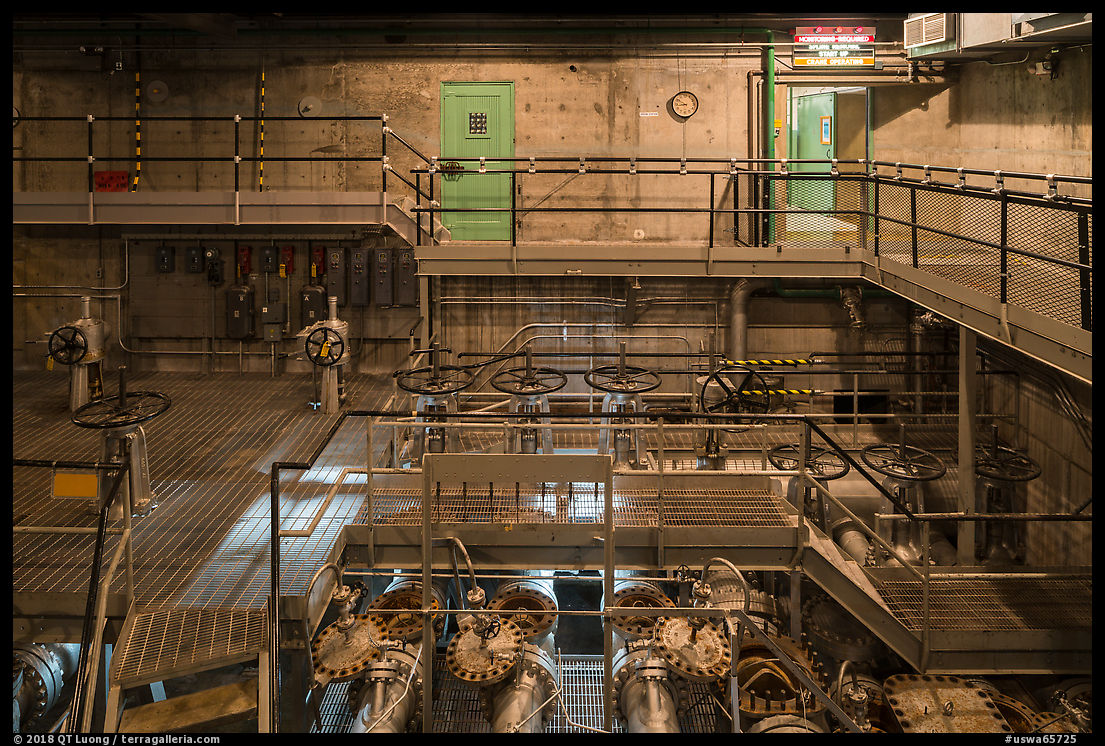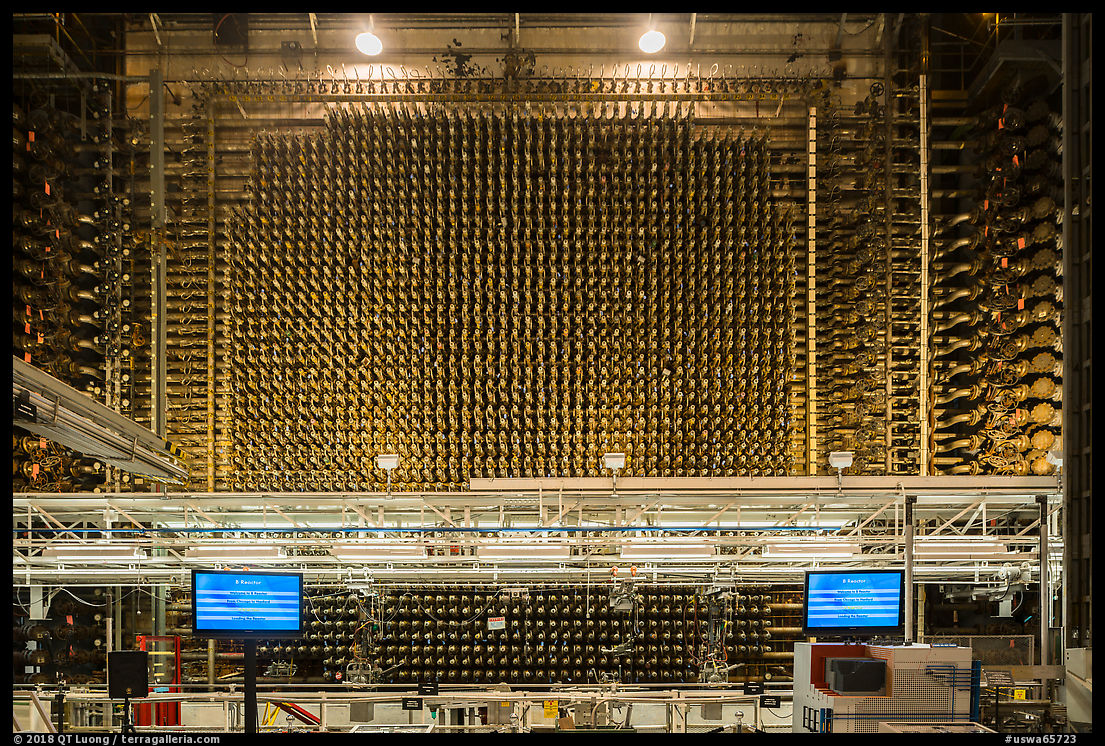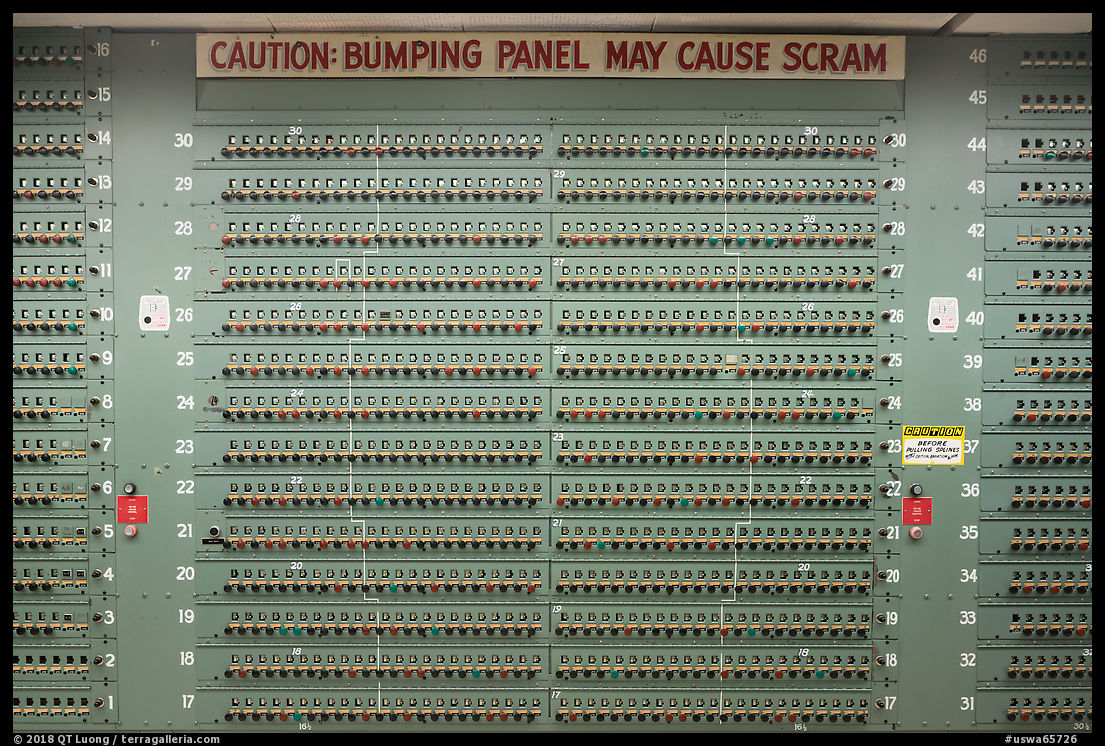Visiting the Hanford Site: Inside the World’s First Nuclear Reactor
4 Comments
The dual side of Hanford Reach, and reason for the accidental existence of Hanford Reach National Monument, is the Hanford Site (Hanford Nuclear Reservation) the former top secret Manhattan Project plutonium production facility established in 1943, which is almost entirely surrounded by the national monument.
Visiting the mysterious site used to require a security clearance, but since it became part of the Manhattan Project National Historic Site in 2015, any U.S. citizen can sign up for a free tour – and proof of citizenship was not even required.

After the government chose the Hanford Site for its remoteness and supply of water/electricity via the Columbia River, two communities were condemned and evacuated. One of the tours visits the remains of those communities. The other, probably the most interesting one, takes you inside the historic B reactor.

The B Reactor was the first large-scale nuclear reactor ever built. It supplied the plutonium used in the first atomic explosion (at the test Trinity site in New Mexico, July 1945) and in the Fat Man bomb dropped over Nagasaki on Aug 9, 1945. Remarkably, although the Manhattan Project started only in August 1942 and construction at Hanford started in March 1943, by November 1944, B Reactor produced its first batch of plutonium. In February 1945, as Franklin Matthias, who had supervised Hanford’s construction, hand-delivered in Los Angeles the first 100-gram batch of plutonium to a courier heading Los Alamos, he told him the 3-inch object had cost $300 to make. During the Cold War, the site expanded to nine nuclear reactors that produced most of the plutonium for more than 60,000 nuclear weapons. After the end of the Cold War caused the Hanford Site to be decommissioned, those reactors have been entombed (“cocooned”) in concrete, except for reactor B which has been designated a National Historic Landmark by the National Park Service (NPS) and partly converted into a museum.

Except for the tours, the Hanford Site is not open to the public. Research facilities and commercial nuclear production are still active. More notably, the largest environmental Superfund cleanup effort in the country takes place there. The site is considered to be the most toxic place in America and has been dubbed “America’s Chernobyl”, with estimates by the Government Accountability Office for the clean up reaching more than $100 billion. The reactor tours are conducted by the Department of Energy in partnership with the NPS (information and advance reservations here), daily or twice a day except on Sundays from the end of May to mid-November. In addition, there is an annual tour of the cleanup process ran by the Department of Energy.

You meet at a temporary visitor center located in an anonymous business park in the city of Richland. There, you confirm your online sign-up and watch an introductory video before boarding a comfortable bus for a 45 minutes ride straight to the B reactor, during which a volunteer details more facts about the project. The reactor visit starts with another presentation in front of the impressive reactor’s core, after which visitors split into guided groups to view different parts of the facility such as the cooling system and control room before being left on their own. SCRAM is a jargon term (of uncertain etymology) meaning emergency shutdown of a nuclear reactor effected by immediately terminating the fission reaction.

I found the tour to be professionally conducted, explanations to be interesting and in-depth, and appreciated that there are no restrictions on photography, video, or use of tripods. Overall, the tour lasts 4 hours, is well worth the time, and a great way to spend those mid-day hours indoors. Given how historically significant the once secret site was, I think it is a unique opportunity to access something you’ll certainly not see anywhere else and gain a direct understanding of a technology that has changed the course of our world.


I didn’t know about this. I will have to visit. Thank you.
i was stationed at B Battery of the 83 Missile Bn and responsible for the monthly test of the 26 Nike A-jax missles at that site. The inverter that was installed and used to power the launcher and missile was not powerful enough to carry the load of the missile electronic and the hydraulics of the launcher. I figured out that to test the missile guidance package you did not need the launcher hydraulics so I proved all the missiles at B Battery would work as needed. Douglas Aircraft sent 3 engineers to my site to see what I was doing to prove they were ready to fire. They realize I was right and changed the test procedure to suit what I was doing. At that time I was a Specialist 3 and the Capt of B Battery called me to his office and said “come in Sgt. Thompson.” I served the Army for 3 years and 2 of them was at this Hanford Site where duty was every other night and weekends.
I forgot to mention that B Battery was 50 miles by dirt roads and the only way we got back and forth was by a Army Bus crossing the Columbia River by an Army Ferry back to Richlands to pass Barracks where we were given 2 sheets a pillow with case and one blanket in the Summer and 2 Blankets in the winter with a mess hall in Camp Hanford. Spent many hours all over Washington, Oregon and idaho in one of my army buddy car after we stopped at the first Bar and bought a case of Olie and or Ranier Beer and we would spent nights at Frat houses in those states and colleges.
In the PBS documentary “Hanford”, There was about 5 lbs of Plutonium in a special container “about the size of two shoe-boxes.” The courier from Hanford took it by ambulance to Portland where he boarded a train for Los Angeles. In Los Angeles he met an Army officer who would take it on another train to Los Alamos. The Hanford man asked the Army officer if he had a private compartment.
“No,” the Army officer replied. I’ll sleep sitting up with it under my feet.
The Hanford courier, unable to tell the Army officer what he was carrying said, “This package cost 350 million dollars. I suggest you get a private compartment and lock it.” The 350 million figure was the cost of the Hanford plant in 1944 dollars.
Was the 3 oz mentioned here an earlier sample?